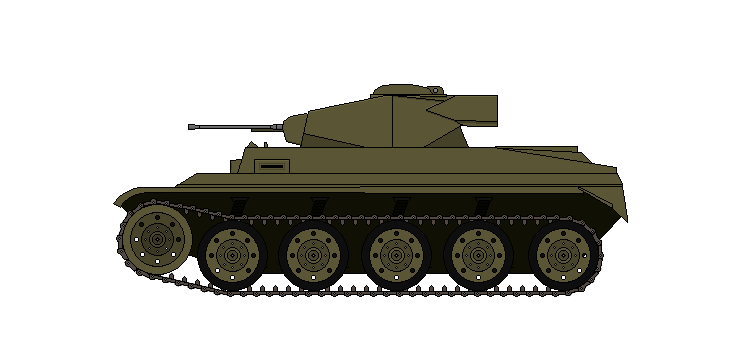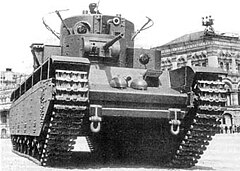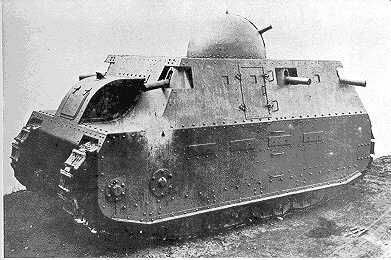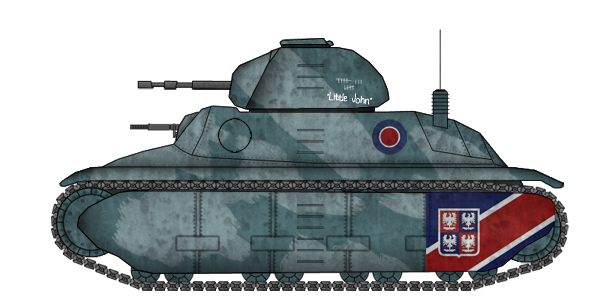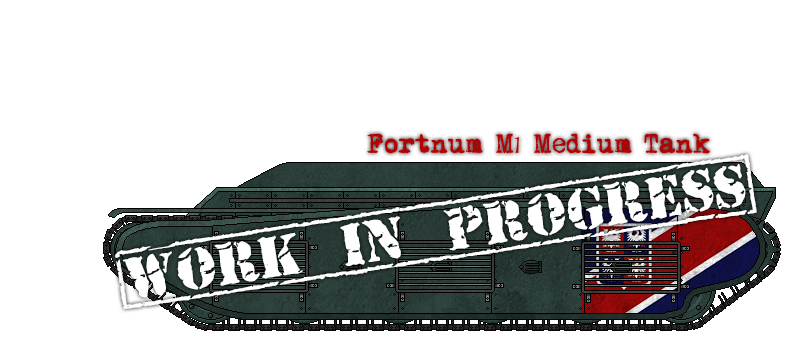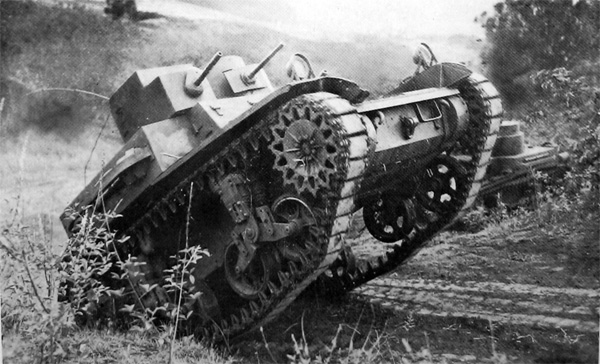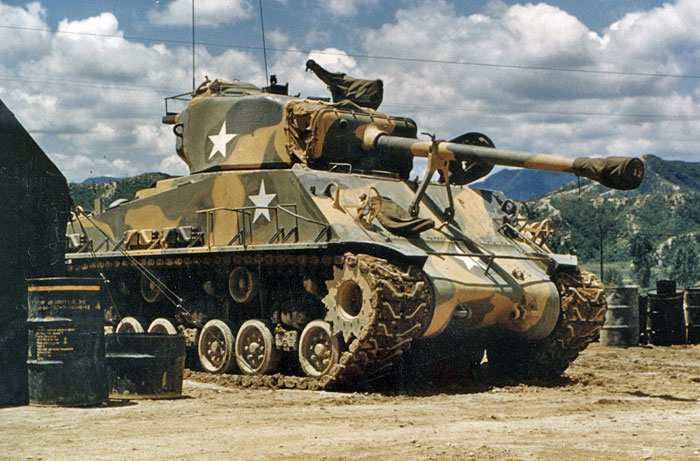Your Nations First Tank's and AFV's
Black Widow Tank

The Black Widow Tank, officially the "Armoured Gun Carriage (All-Terrain)", was an early armoured fighting vehicle developed by the Allied States of Noders.
Introduced in 1916, shortly after the introduction of the Mark I Tank by the British, the vehicle owed more to the Imperial Russian prototype tank Vezdekhod than the British model. This included the single track design, which had one large, ultra-wide rubber track positioned centrally on rollers. The side steering wheels of the Russian vehicle were replaced in the Nodiran design by a steering tail similar to that of the British Mark I.
This track design gave excellent off-road ability because of the extreme spreading of the vehicle's weight; the Nodiran Armoured Gun Carriage was considerably faster than almost all other tanks of the World War 1 period. The extreme width of the track also made it less vulnerable to small arms fire; while bullets could pierce the track fairly easily, the band of thick rubber was wide enough that there was little danger of any single shot breaking the track. If a track was broken, however, field repair was extremely difficult. It also meant that the drivers were forced to the sides of the vehicle in order to be able to see ahead.
Like the British Mark I tank, however, the Armoured Gun Carriage carried its main armament in sponsons at either side. In early tests, it was found that the planned dorsal turret raised the vehicle's centre of gravity by an unacceptable amount, overbalancing the vehicle on rough ground, and the turret was scrapped. The planned single 6-pounder naval gun was swapped for two 4-pounder guns and moved to the rear part of the (enlarged) drivers' sponsons.
When it entered service with the Nodiran Army in 1916, the Armoured Gun Carriage was quickly dubbed the "Black Widow" for its speed and deadliness in battle, as well as for the black and red Nodiran markings. Many Black Widows were unofficially repainted with red "hourglass" figures rather than the official Nodiran scorpion's tail marking, revelling in the unofficial but common designation.
The initial Nodiran design had several problems corrected in later versions; most notably the flat roof. Later marks of the Black Widow featured a peaked roof to prevent thrown grenades from getting stuck on top of the tank.
All in all, the Black Widow was a remarkable vehicle, even with its problems.
Oppressor Tank

The Oppressor was one of the first heavy tank designs in the world, and was the second tank design introduced by Noders in 1916. Marginally smaller than the German A7V Sturmpanzerwagen, it was more heavily armed and armoured, and had a higher top road speed due to its (for the time) enormous 12-cylinder gasoline engine.
The main armament of the "Oppressor" was a large 3-inch 12-pounder naval gun located in a turret atop the vehicle. In this regard, the vehicle was superior to several other kinds of contemporary tank, as it could turn its main gun to face any threat, something which neither the French St. Chamond nor the British Mark I could do.
Secondary armament was divided between 6-pounder guns and .303 calibre machine guns, usually in a 2-3 ratio. One machine gun was located forward, and the others were located in side sponsons.
The weight of armour carried reduced the off-road speed to around 4mph, but made the Oppressor a virtually impregnable mobile fortress, impenetrable to many light field guns as well as the machine guns of the time.
Akrabbim Armoured Car

The Akrabbim Armoured Car was the standard armoured car of Noders during the First World War period. Developed by the Akrabbim Motor Company of Noders, it was unique in the period for being a three-axle vehicle, though it was otherwise visually similar to the Austro-Hungarian Romfell Armoured Car.
The Akrabbim ("Scorpions" in Hebrew) Motor Company designed quite a heavy armoured car which was more resistant than many other period armoured cars to machine gun fire. A fairly powerful 6-cylinder engine drove the armoured vehicle at up to 28mph on roads, and the third axle did much to help with gaining traction in off-road conditions. In the thick mud of the Western Front, however, the Akrabbim, like most other wheeled vehicles, was soon bogged down by the poor conditions.
Armament as designed was a single .50-calibre machine gun, though late-production Akrabbim armoured cars (April 1917 and following) featured a redesigned turret armed with two synchronously-firing .50-calibre machine guns.
The main drawback of the Akrabbim armoured car was the complexity of its three axle wheel base. Motor vehicles were still a relatively new invention, and military motor vehicles doubly so. A system featuring more than one drive axle had been done before, but relatively few times on a vehicle powered by an internal combustion engine, and the added complexity made the Akrabbim mechanically finicky and difficult to keep in working order. This was especially true in mud conditions, though in towns and on roadways, the Akrabbim could operate easily and annihilate lighter vehicles and infantry.
The vehicle's armour averaged ¼ inch, which was thick for an armoured car of the period. It made the vehicle heavier than many other armoured cars, but except in wet mud conditions, the engine was usually powerful enough to pull the excess weight.
